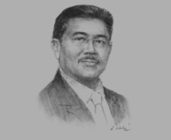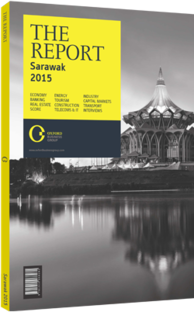OBG talks to Mohamad Morshidi bin Abdul Ghani, Sarawak State Secretary

Interview: Mohamad Morshidi bin Abdul Ghani
Where is Sarawak focusing in order to expand regional trade, and how has investor interest in the East ASEAN Growth Area evolved?
MOHAMAD MORSHIDI BIN ABDUL GHANI: In terms of its role in regional trade, the area in which we believe Sarawak has a significant advantage relative to the greater region is in the energy sector. The development and transmission of electricity is an area that we are very keen to explore further, as electricity has been the most basic driver of economic development in the region.
Taking advantage of the energy available within the state, international investors can come to invest in the development of industries in our Samalaju Industrial Park, which is a part of the Sarawak Corridor of Renewable Energy (SCORE) plan. The global scenario changed dramatically during the end of 2014 and the beginning of 2015, affecting global corporate positioning, especially in relation to a global rebound. Companies seek greater cost competitiveness, and we believe that Sarawak has a lot to offer global firms in the medium to long term.
Within the East ASEAN Growth Area specifically, we would like to see more foreign participation in areas that require foreign capital and technology. These key segments can help us achieve higher incomes by creating better-paying jobs for our people. Sarawak is a small market within the East Asian Growth Area. The best role that we can play in this regional economic development process is for Sarawak to become a regional hub – a jumping-off point – for the more remote areas of this region. The island of Borneo has not yet received proper consideration, from the point of view of its strategic positioning in South-east Asia, and in response to this we are all trying to enhance our own economic development efforts. The internal linkages of the island may be an important area to consider, before we look too closely at our external links with the rest of the world. There does not seem to be urgency to expand these at present, but I am sure there will come a time when the importance of developing the common interests of the island will become obvious.
What strategies is Sarawak implementing in 2015 to achieve the state’s rural development goals?
MORSHIDI: Our overall strategy for achieving our rural development goals in 2015 is to raise rural incomes through greater transformational changes. The biggest rural change is the development of hydroelectric power projects, which will result in major road links from the hinterland to coastal markets, as well as the redevelopment of rural centres, creating sufficient critical mass for greater economic efficiency. Apart from Bakun and Murum, our two other major projects are Baleh and Baram. We will also focus on rubber plantations, aquaculture and tourism. The developments in all of these sectors will, together, contribute to the realisation of our rural development goals in the near future.
What new initiatives are under way for education in Sarawak to build the local talent pool?
MORSHIDI: The hope for young Sarawakians lies in proper human values and useful skills. By building upon their individual capacities, they can work both alone and with others to create new ventures to pursue throughout their lives. The newest opportunities available are in entrepreneurial projects which they themselves will create, rather than any regimented jobs that the government can dream up.
Education is a very broad concept. In formalised education, education is taken care of at the federal level. However, of equal concern for us is the freedom of the private sector to provide educational facilities and training. The state government is filling the vocational training through SCORE development projects currently being undertaken in Sarawak. Nonetheless we see potential in entrepreneurship, the development of which carries enormous opportunity and the real world is its proper training ground.
You have reached the limit of premium articles you can view for free.
Choose from the options below to purchase print or digital editions of our Reports. You can also purchase a website subscription giving you unlimited access to all of our Reports online for 12 months.
If you have already purchased this Report or have a website subscription, please login to continue.

